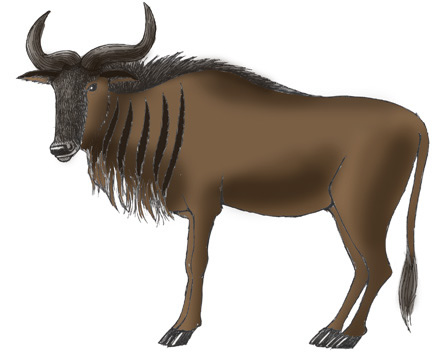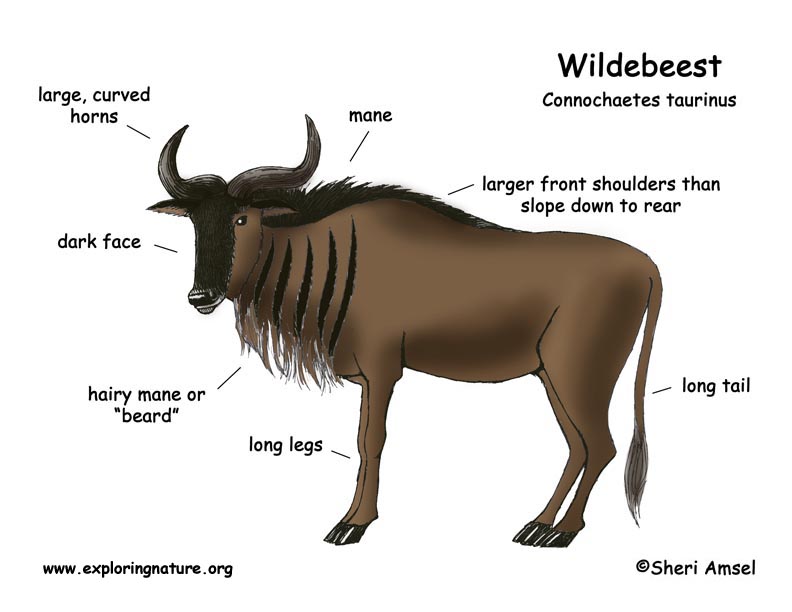

They are found in eastern Africa.
They live on the African savannas.
They are large animals weighing more than 500 pounds (260 kg). They are larger in the front shoulders and slope down to the rear end. They have a large head with a dark face and a wide mouth for feeding on grass and horns. They have a mane and a short, grayish-brown, shiny coat.
They graze in the early-morning and late-afternoon near water and drink midday (when most predators are sleeping). They can run up to 50 mph (80 km/h).
They eat grass.
They are killed by hyenas, cheetahs, leopards, wild dogs, crocodiles and lions.
Females are pregnant for 8.5 months (gestation) and have 1 young that can stand within minutes. This is important on the African savannah where predators look for vulnerable prey.
They can live 20 years in the wild. They are listed as Lower Risk - conservation dependent.
Kingdom: Animalia
Phylum: Chordata
Subphylum: Vertebrata
Class: Mammalia
Order: Artiodactyla
Family: Bovidae
Subfamily: Alcelaphinae
Genus: Connochaetes
Species: Connochaetes taurinus
When you research information you must cite the reference. Citing for websites is different from citing from books, magazines and periodicals. The style of citing shown here is from the MLA Style Citations (Modern Language Association).
When citing a WEBSITE the general format is as follows.
Author Last Name, First Name(s). "Title: Subtitle of Part of Web Page, if appropriate." Title: Subtitle: Section of Page if appropriate. Sponsoring/Publishing Agency, If Given. Additional significant descriptive information. Date of Electronic Publication or other Date, such as Last Updated. Day Month Year of access < URL >.
Amsel, Sheri. "Wildebeest" Exploring Nature Educational Resource ©2005-2024. December 14, 2024
< http://www.exploringnature.org/db/view/435 >

